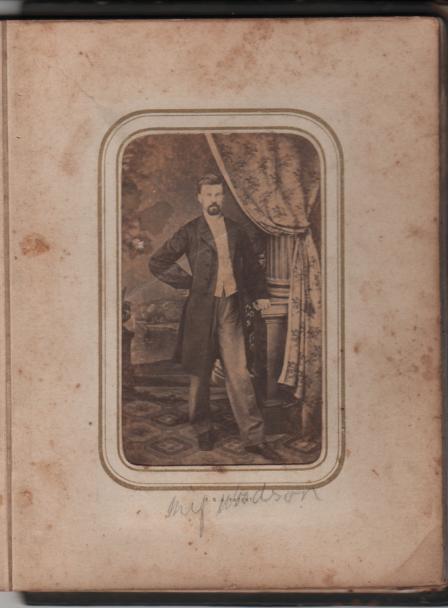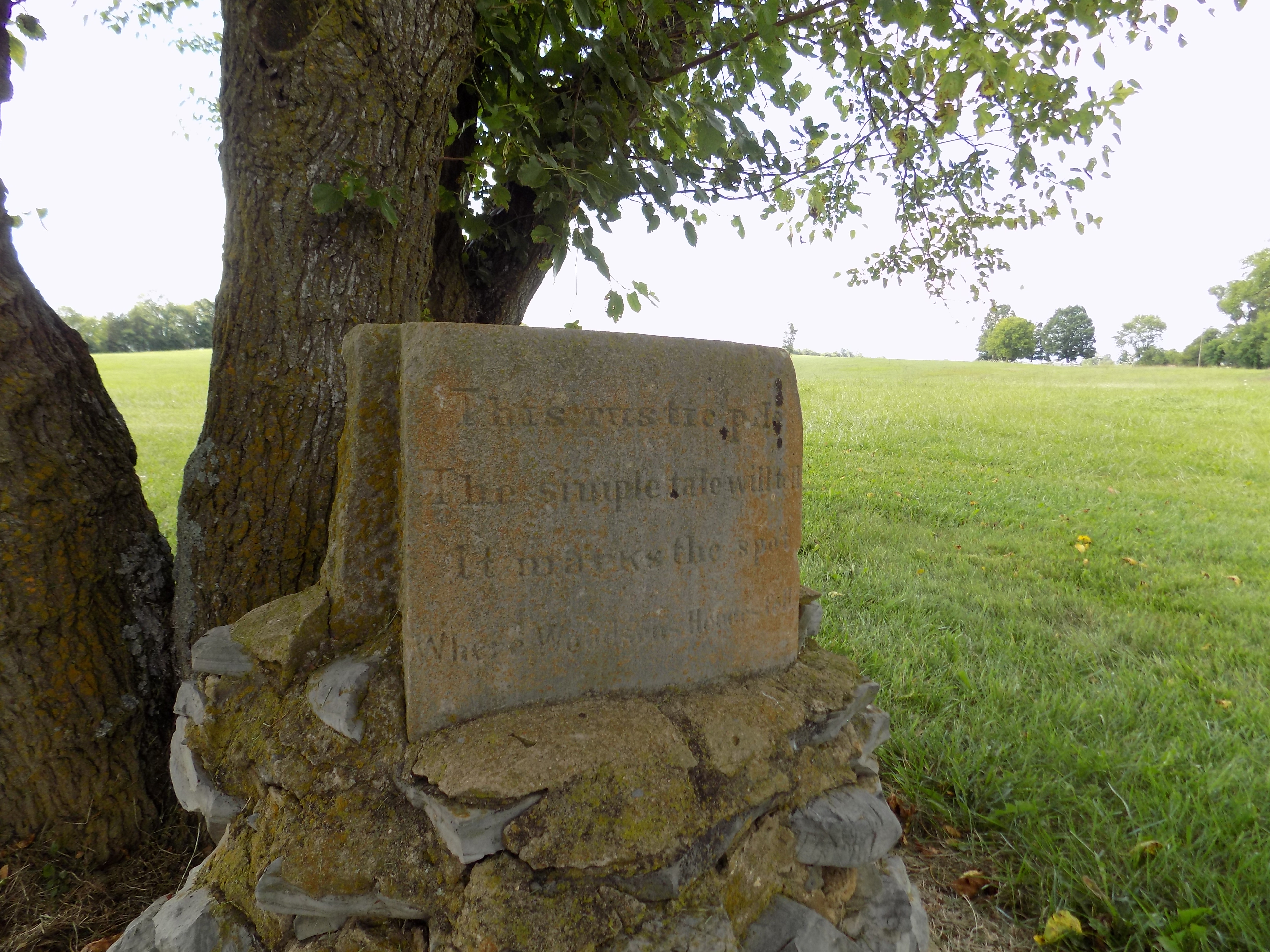Battlefield Markers & Monuments: Woodson’s Missourians At New Market

The marker sits near the orchard, within sight of the Bushong House on Virginia’s New Market Battlefield. It’s normally a peaceful, quiet scene on a typical twenty-first century day. We look closer to read the fading inscription in the limestone: “This rustic pile – The simple tale will tell: – It marks the spot – Where Woodson’s Heroes fell.”
Erected in May 1905 by a veteran of the unit, this marker is a solitary reminder of a unique group of men. Woodson’s Missourians “Company A” was the only unit from the border state of Missouri to fight for the Confederacy in Virginia.
Missouri was a border state during the Civil War, and Missourians served on both sides. The men who formed Woodson’s company had fought for the Confederacy in regiments and possibly guerrilla bands. They had all been captured – some at Port Gibson, Vicksburg, or other locations. Held prisoner in Alton, Illinois, these Missourians were exchanged in June 1863. The exchange location? City Point, Virginia.

Virginia is quite a distance from Missouri, but there was plenty of fighting in the eastern theater. Charles H. Woodson persuaded the authorities in Richmond to allow him to organize the fellows from his state and stay to fight in the Old Dominion State. Eventually, Woodson got permission, and, by August 1863, he had rallied about seventy men and became their captain. General John Imboden – a cavalry commander in the Virginian Shenandoah Valley – welcomed the little unit which soon received the nickname “Missouri Exiles.” Imboden attached his new exiles to the 62nd Virginia Cavalry which fought dismounted since they lacked horses; the Missourians joined the footsore “cavalry.”
In the early spring of 1864, Woodson’s men officially re-enlisted with the Confederacy for “forty years or the war.” These men were not going home without a fight – win or lose.
On May 15, 1864, Union forces commanded by General Franz Sigel battled with Confederate units led by General John C. Breckinridge near the town of New Market. The Confederates advanced but were eventually slowed and battle-halted along an orchard fence just north of the Bushong House. The infantry units, dismounted cavalry, and the Confederate reserve (Virginia Military Institute’s cadets) fought back. At the center of the line stood the 62nd Virginia Cavalry; on their right flank, Woodson’s Missourians engaged Von Kleiser’s Union artillery directly in front of them. With the reserves filling a gap and strengthening the battle line, the Confederates repulsed another Union attack and launched their own assault which prompted a decisive Union retreat and another Southern victory in the Valley.
The “Missouri Exiles” had held their line and paid a heavy price. Sixty-two men were present at the beginning of the Battle of New Market; when the firing ceased, their casualties were between forty and sixty soldiers. (There is some discrepancies in the casualty reports.) Between sixty-four to ninety percent losses, this unit had the highest casualty rate at the Battle of New Market.

In 1903, James H. Dwyer, a member of Woodson’s Missourians who had been wounded at New Market, returned to the battleground as a tour guide. He asked the Bushongs if he could place a marker on their property to commemorate the unique unit and their historical moment at the Battle of New Market. When the Bushongs agreed, Dwyer returned two years later with another Missourian comrade and, with the aid of two other friends, they placed the simple limestone marker.
Woodson’s Missourians. Determined men with a unique unit history. Imprisoned, exchanged, and banded together they fought an artillery battery from a distance described as “close pistol shot.” They saw their friends and comrades mangled and killed in the maelstrom of battle, suffering horrible casualties rates.
In the end, a few wanted their actions remembered. They didn’t erect a large, statuesque monument. Instead, it’s just a marker with a simple tale to tell about an exile unit and their courage under fire.
Sources:
Charles E. Knight, Valley Thunder: The Battle of New Market and the Opening of the Shenandoah Valley Campaign, May 1864, Savas Beatie, 2010.
William C. Davis, The Battle of New Market, 1975.
Information sign near the marker on New Market Battlefield, Virginia.

Favorite small battlefield of the war. Thanks for sharing.
Splendid tale !
Great post! It is nice to see an original marker, but sadly they are getting more difficult to read as the years pass. I have mixed feelings about these older markers. Should they be restored or left as is? I, also, believe that a cannon on the battlefield should be considered as a monument. When I see green oxidized barrels on these cannons, I sometimes wonder what that row of cannons would look like all polished up and ready for service.